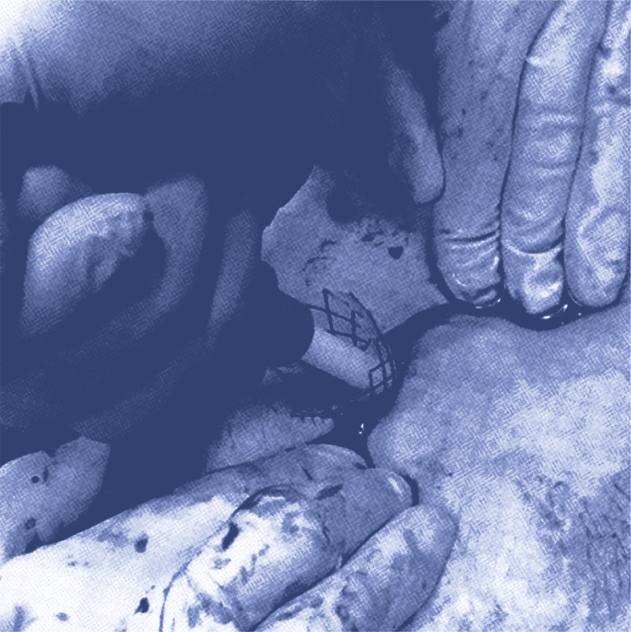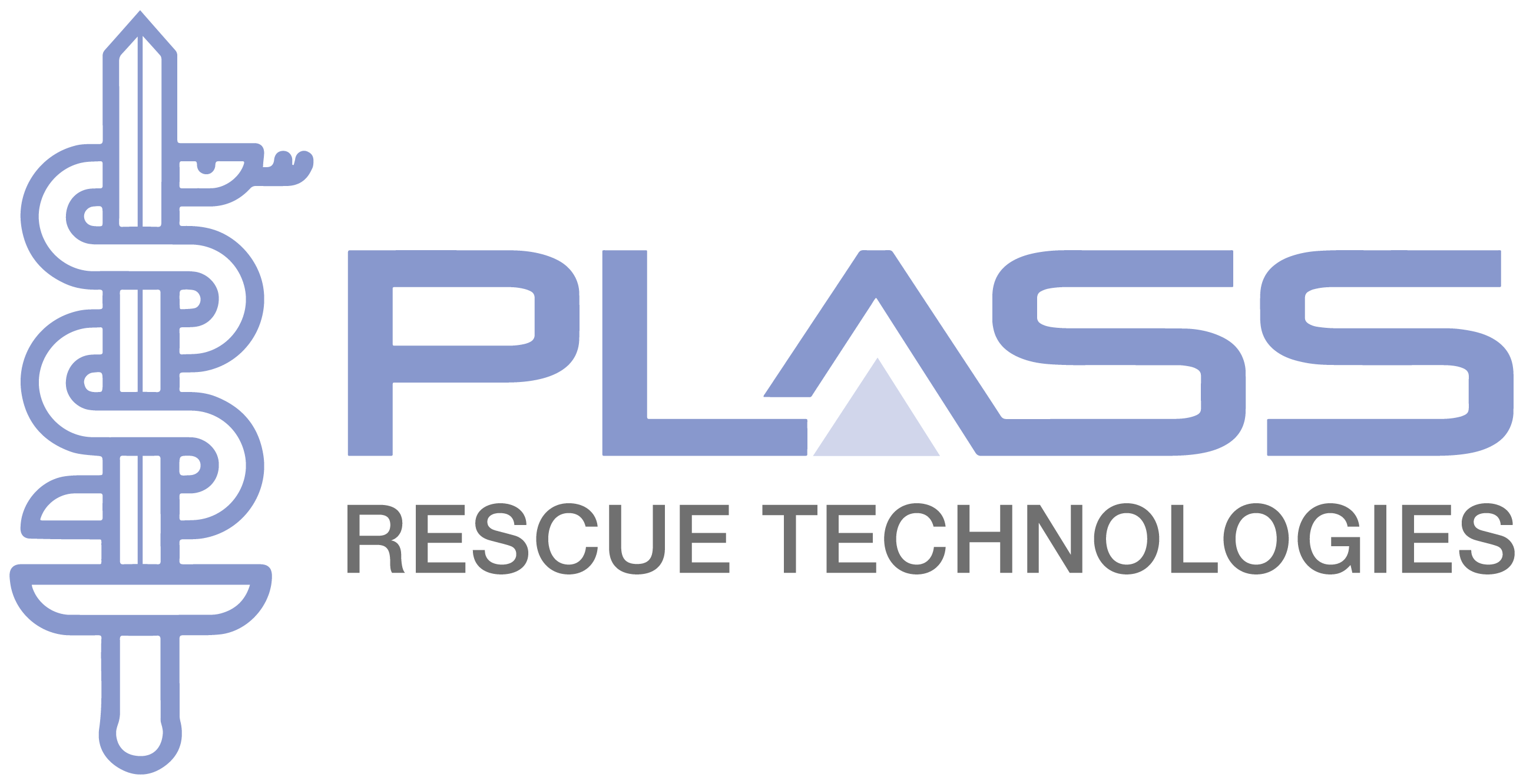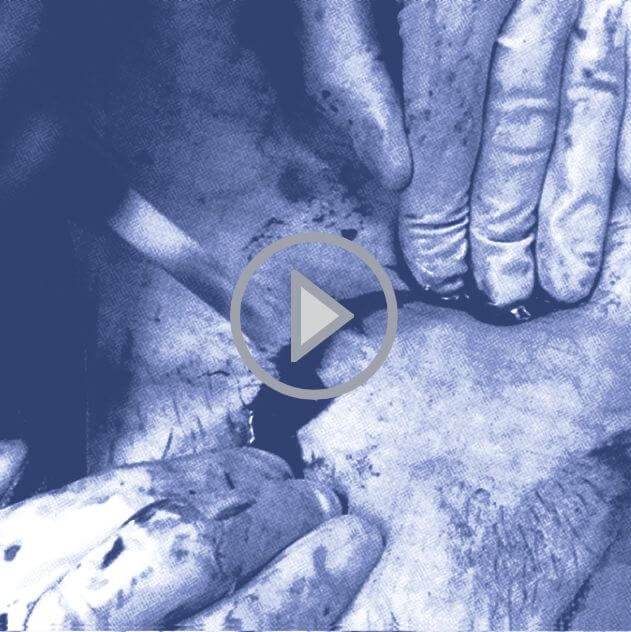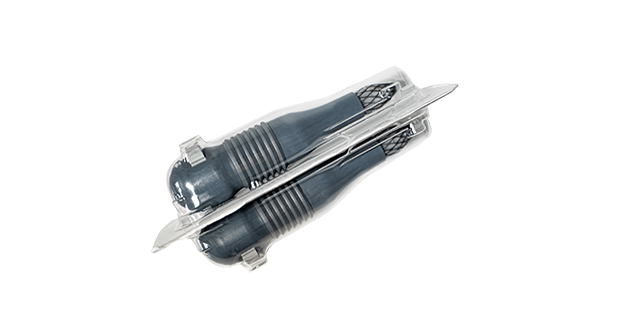
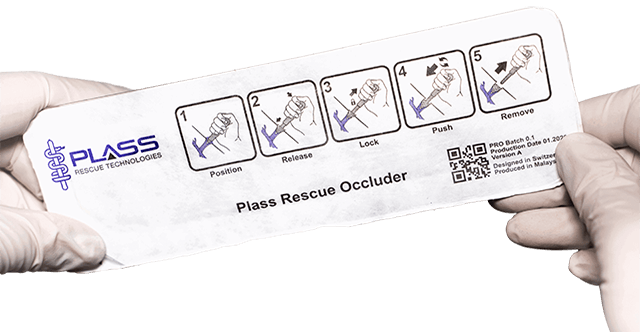
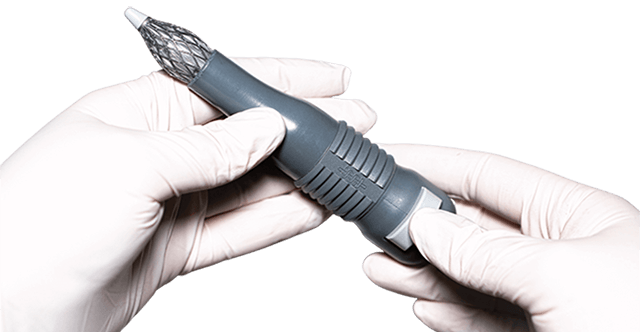
Background
Haemorrhage due to trauma is the leading preventable cause of death in the military setting, accounting for up to 90% potentially preventable deaths [1, 2]. In the civilian setting, it is the second most leading cause of death in trauma patients, with studies reporting up to 26-40% of mortality rate [3, 4].
The solution
The Plass Rescue Occluder with his unique “push & plug procedure” is designed to manage and control heavily bleeding wound channels from junctional body regions as well as extremities caused by bullet or knife stab, which are hemodynamically significant (Advanced Trauma Life Support class 3 or 4 hemorrhagic shock).

Unique “Push & Plug” procedure
The Plass Rescue Occluder consists of an applicator with an integrated pusher function and a self-expanding, cone-shaped silicone covered Nitinol meshgraft.
With an easy 5 steps application the Plass Rescue Occluder can instantly stop bleeding-out. After release out of the applicator the cone-shaped Nitinol meshgraft will automatically expand and the „push & plug“ procedure enables a physical barrier in the wound channel. It is intended for temporary use up to three hours until surgical care is acquired.
Key benefits of the Plass Rescue Occluder
- Applicable to deep wound channels (diameter 1 – 3 cm) involving low-and high pressure vessel injuries
- Can stop and control bleeding instantly (in 20 seconds incl. application time)
- Highly targeted occlusion (lower risk for ischemia in extremities)
- Lower risk of re-bleeding during mobilization
- Fast and clean removal (minimum blood loss and no further forensic contamination)
- Ultra-light and highly robust packaging
- Single-hand unpacking & usage for fast and easy application
Training equipment
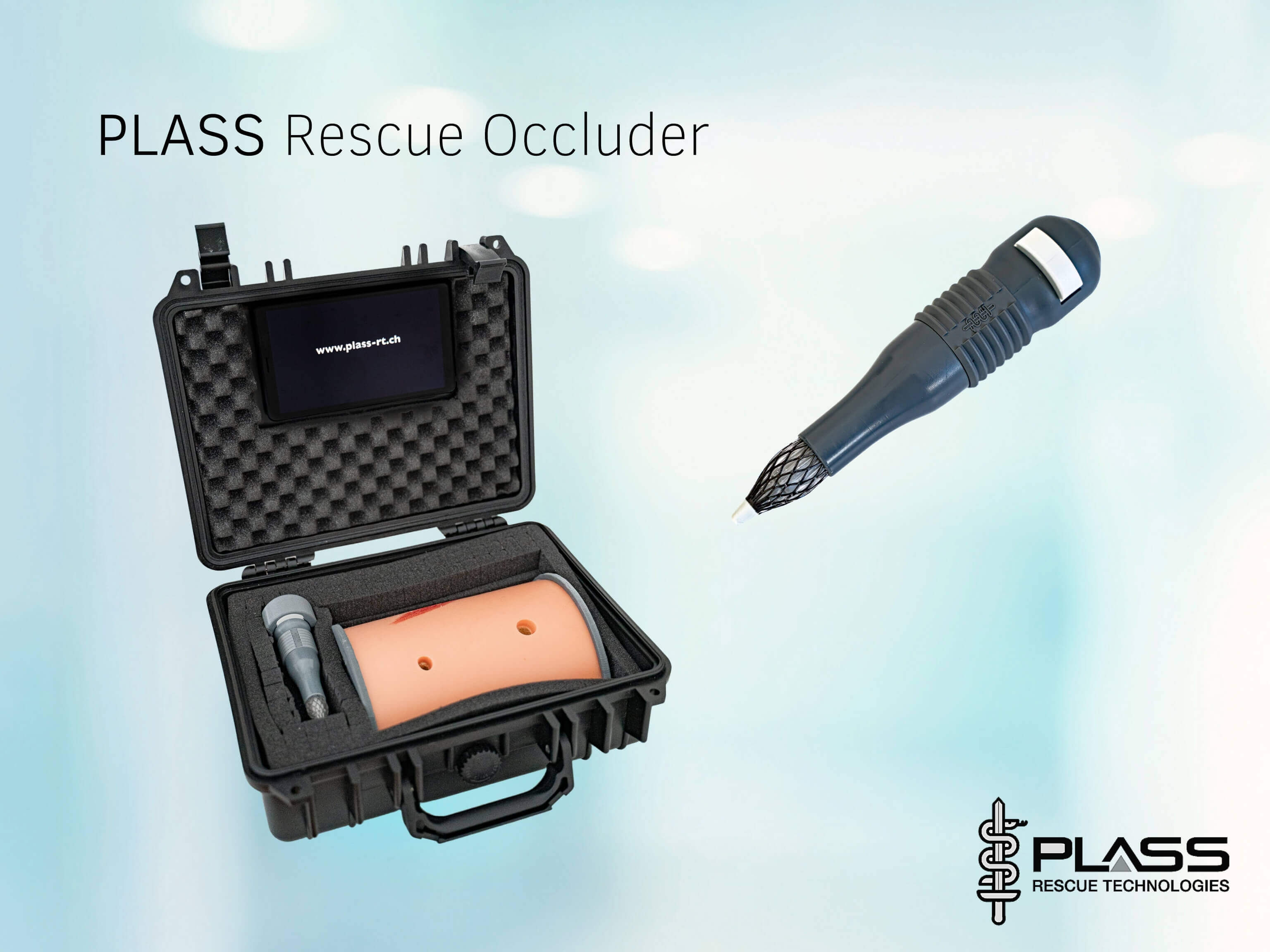
A training kit for the Plass Rescue Occluder with integrated screen for demo and instructions inclusive teaching material is available and can be ordered.
References
1. Bellamy RF. The causes of death in convectional land warfare: implications for combat casualty care research. Mil med. 1984;149:55-62.
2. Eastridge BJ et al. Death on the battlefield (2001-2011): implications for the future of combat casualty care. J Trauma Acute Care Surg. 2012;73:S431-7.
3. Tien HC et al. Preventable deaths from hemorrhage at level I Canadian trauma center. J Trauma. 2007;62:142-6.
4. Teixeira PGR et al. Preventable or potentially preventable mortality at a mature trauma center. J Trauma. 2007;63:1338-46.
Easy handling and application of the Plass Rescue Occluder
